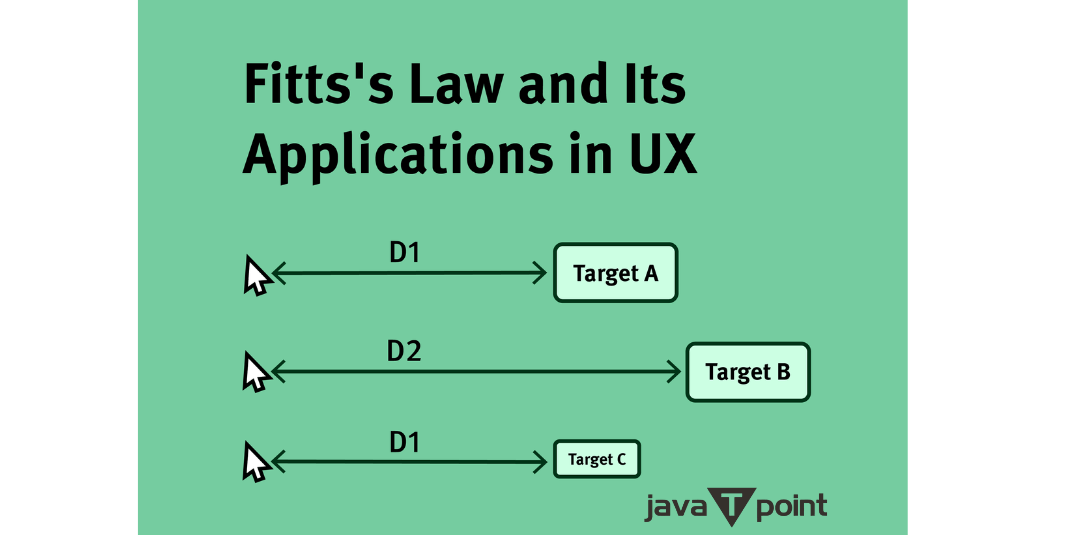fitt's Law and hick-hymans's LawTwo theories that are frequently used in graphic design are Hicks and Fitts laws. According to Hicks law, selecting an option will take longer if a user has to choose from a larger number of possibilities than if they are grouped. Fitt's rule argues that the longer it takes a user to select, the greater the distance they must go and the smaller the area they must click on. On a 27" non-touchscreen monitor, Fitts law is exemplified by Windows 8 Metro apps such as Mail. It wears me out to move the mouse around. The location of the optimal click targets is an intriguing feature of Fitts law for mouse pointing, and Windows 8 by Microsoft takes advantage of this. Things like these are "obvious once you've been told about it" :-). As for the best click target, that is the location of your cursor right now. However, the edges of the screen rank second because you can strike them with your mouse in an endless amount of space. The screen's edges come next since they have an infinite size in a single dimension. Fitt's Law:One of the first and best-known predictive models in Human-Computer Interaction (HCI) is Fitts' Law. It was initially put forth by Paul M. Fitts in 1954 and is now regarded as a fundamental idea in the industry. In particular, the legislation focuses on how humans move their hands and fingers when interacting with computer interfaces as a model of human motor function. It sheds light on the connection between target size, target distance, and movement time. It's crucial to remember that Fitts' Law only simulates motor function under certain conditions; it is not a general rule. Although it is quite useful for pointing tasks and interactive design, its predictions perform best in the particular setting of these limitations. Fitts' Law, which describes the relationship between a target's properties and the speed and accuracy of human movement, is a foundational idea in ergonomics and human-computer interaction. Paul Fitts, a psychologist, created the Law in 1954. Fitts' Law has been widely used in user interface design, assisting designers in producing more effective and user-friendly systems by optimizing interactive element arrangement and dimensions in accordance with the Law's stated principles. Statement:According to Fitts' Law, the ratio of the target's breadth to its distance from the source determines how long it will take to move quickly toward the target area. Stated differently, it depicts the balance between velocity and precision when making targeting movements. 
Task Difficulty:Measuring "task difficulty," or more precisely, how hard it is for someone to reach a target with his hand or finger at a distance "D" from his current position, is the main goal of Fitts' Law. Take note that quick, precise, and error-free movement is expected. Task difficulty mainly depends on 2 measures: Distance (D): the required distance for the individual to move his hand or finger. This is also known as the movement's amplitude (A). The challenge gets harder as the D size increases. Width (W): The breadth of the target that the individual must attain affects the difficulty as well. The process gets easier as the width increases. Fitts suggested the "index of difficulty" (ID), a "concrete" measure of task difficulty. Fitts postulated the following relationship between ID, D, and W based on his interpretation of actual evidence. ID = log2 (D/W+1) [unit is bits] Throughput:Fitts also suggested a metric that is now known as throughput (TP), which was once known as the index of performance (IP). Calculated by dividing the movement time required to do a job (MT, in seconds) by the task's difficulty (ID, in bits). TP = ID/MT bits/S The Hick-Hyman Law:Hick's Law, also known as the Hick-Hyman Law, explains the connection between a person's decision-making time and the quantity of equally likely options available to them. In 1952, psychologists Ray Hyman and William Edmund Hick proposed the legislation. Fitts' Law connects motor behavior to task performance, but Hick's Law, also known as the Hick-Hyman Law, is another law that is frequently applied in Human-Computer Interaction (HCI). This Law deals with "reaction time," or how long it takes for someone to respond to a stimulus, especially when there are options available. The British and American psychologists William Edmund Hick and Ray Hyman are the names behind Hick's Law. They looked at the connection between a person's response time to a certain stimulus and the quantity of stimuli present in 1952. The main finding is that it takes a user longer to choose which stimulus or option to interact with when they are given more options. Users' reaction times increase as a result of their requirement for time to evaluate and make decisions when presented with an abundance of options. Hick-Hyman's Law clarifies the cognitive load connected to making decisions when presented with a variety of options. It highlights the possibility of user delays when presented with more options, which contributes to an increased cognitive load.
Next TopicGOMS family of models (KLM and CMN-GOMS)
|
 For Videos Join Our Youtube Channel: Join Now
For Videos Join Our Youtube Channel: Join Now
Feedback
- Send your Feedback to [email protected]
Help Others, Please Share









